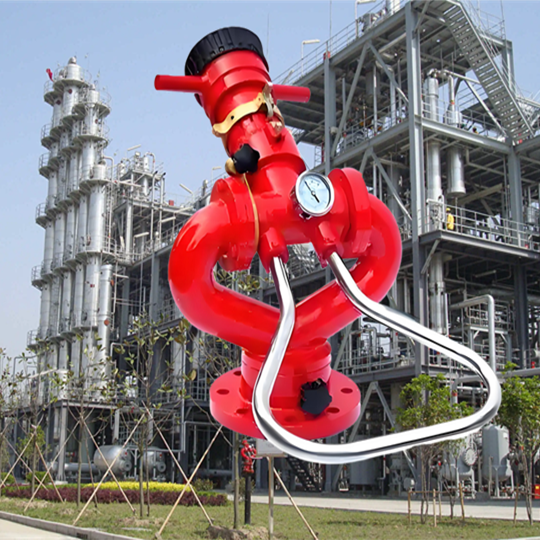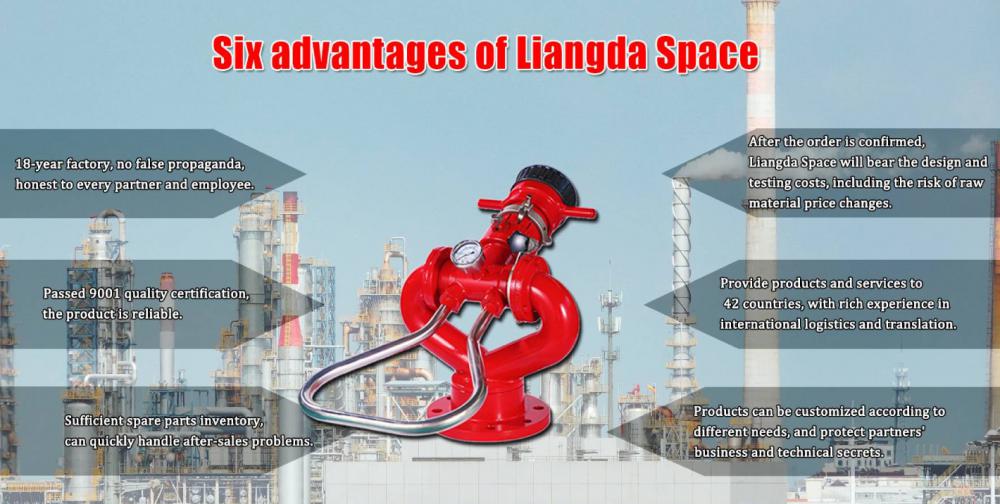Fixed fire monitors serve as critical long-range fire suppression equipment requiring strategic placement for optimal emergency response. Below are the key technical specifications and installation requirements compliant with international fire safety standards:

Fixed fire monitors should be installed at elevated positions in high-risk fire areas prone to rapid flame propagation, including but not limited to:
Industrial manufacturing facilities
Warehousing complexes
Large commercial spaces (shopping malls, exhibition centers)
Aircraft hangars and transportation terminals
The installation height must be calculated based on structural blueprints to ensure complete coverage of protected zones. For complex architectural layouts, professional CFD (Computational Fluid Dynamics) fire modeling is recommended to determine optimal positioning.

Spray Adjustment Parameters
Advanced systems must provide:
360° horizontal rotation capability (±2° margin of error)
Vertical elevation range: -90° to +90° from horizontal plane
Minimum angular adjustment precision: 1° increments
Remote-controlled directional targeting with laser guidance systems
Hydraulic Performance Standards
Water supply systems must maintain:
Minimum inlet pressure: 0.35 MPa (50.76 psi)
Flow rate capacity: 2,500-5,000 L/min (dependent on coverage area)
Maximum effective range: 70-100 meters (pressure-dependent)
Pressure stabilization mechanisms to compensate for system demand fluctuations
Water Quality Compliance
Filtration requirements: Class II (ISO 4572) with maximum 800 micron particulate filtration
pH tolerance range: 6.5-8.5
Maximum suspended solids: 50 mg/L
Corrosion inhibition: Langelier Index maintained between -0.5 and +0.5
Implementation notes:
• Install automatic backflush filtration systems where water hardness exceeds 120 ppm CaCO3
• Incorporate cathodic protection for metallic components in saline environments
• Conduct quarterly nozzle inspection for mineral deposit accumulation
This technical guideline aligns with NFPA 20 standards for fixed fire protection equipment and incorporates ISO 6182-9 requirements for water mist systems. Proper implementation ensures compliance with international building codes while optimizing search engine visibility for fire safety professionals and facility managers.







